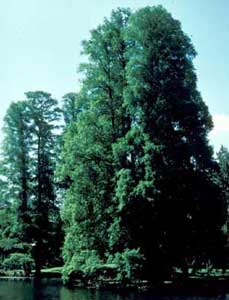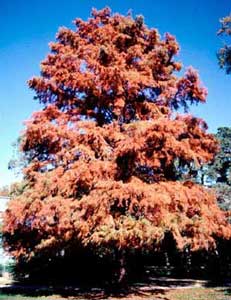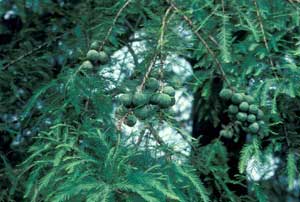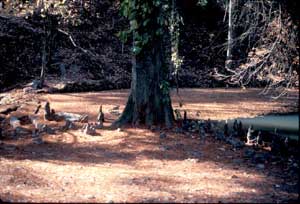Landscape Trees
Baldcypress
(Taxodium distichum)
All Arkansas’ are familiar with our native bald cypress (Taxodium distichum). Most people call forth: ‘oh, that is the tree with knees’. Native across most of the Eastern 1/3 of the U.S., it is most often found in pure stands in permanent swamps. That latter attribute causes confusion for many gardeners. Because they are most typically associated with water, one group of folks believes that they can only grow in wet soils. In fact, just the opposite is true. As many urban planners have discovered, bald cypress is an excellent street or urban tree.
Bald cypress is odd in that it is a deciduous conifer. Unlike pine, spruce, and fir, this cone-bearing (conifer) tree looses all of its leaves in the fall (deciduous). It is that coppery fall color that is another plus for this plant.
If you aren’t satisfied with the ‘plain Jane’ bald cypress, you can spruce up your garden with a unique weeping selection called ‘Cascade Falls’ which was introduced to the U.S. in 2002 from New Zealand. Plant habit depends on your preference. If you do not stake the plant, it will simply creep across the ground as a groundcover. If you do stake it, it will form a beautiful, cascading plant.
There are two problems that need to be addressed. If your soil is not acid, you may experience iron chlorosis. Since the leaves are narrow needles, the impact is a general yellowing of the foliage. The other problem, which is fairly common in Arkansas, is an eriophyid mite that can cause significant bronzing of the foliage by mid-summer. While bagworms are common, it is more of an aesthetic, than treatable problem.
- Common Name: bald cypress
- Varieties to look for: few; ‘Cascade Falls’, ‘Peve Minaret’, Shawnee BraveR
- Flower Color: insignificant
- Blooming period:
- Type: deciduous conifer
- Size: 75’ tall x 30’ wide
- Exposure: sun
- Soil: moisture adaptable, but acid
- Watering: drought tolerant once established
- When to prune: as needed
- Suggested use: landscape tree
Form

Fall color

Fruit and leaf structure

Knees
